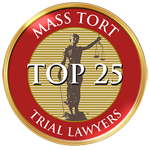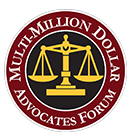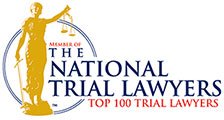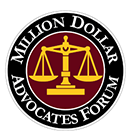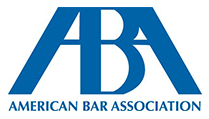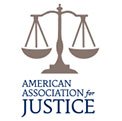Hit and Run Motorcycle Accident Cases
Motorists learn in driver’s education courses or through driving exam study aids what they are supposed to do upon striking another motorist or motorcyclist:
- Stop as close as possible to the scene of the crash;
- Attempt (if it is safe to do so) to move the vehicles out of the way of traffic;
- If it is not safe to move the vehicles and/or if one of the persons involved is unconscious or otherwise cannot be moved, try to set up flares or other devices to alert motorists to the crash;
- Summon law enforcement officers to the scene of the crash;
- If there are injuries or injuries are suspected, also summon emergency medical care;
- Provide the other motorists involved in the crash with your name and insurance information;
- Cooperate with law enforcement officers who are investigating the truth.
In many states, these duties and obligations are enshrined in traffic laws. These simple steps help ensure that those who are injured in motor vehicle crashes receive the medical care they need to treat their injuries and obtain the information that insurance companies need in order to process claims arising out of the crash. These steps are necessary regardless of whether the injured person is the occupant of a motor vehicle or a motorcyclist.
Describing a Motorcycle Accident Hit and Run
Unfortunately, not all motorists carry out these duties and obligations following a crash. When a motorist hits a motorcyclist, that motorist may decide to flee the scene of the accident instead of stopping and rendering aid to the motorcyclist. This is called a hit and run crash: After hitting the motorcyclist, the at-fault motorist runs away from the scene.
There are several reasons why a motorist may choose to do this as opposed to carry out his or her duties under the law:
- The motorist may be uninsured or underinsured and does not have the financial means to pay for injuries or losses that he or she may cause;
- The motorist may fear he or she has seriously or fatally wounded the motorcyclist and may fear the legal ramifications (i.e., jail or heavy fines);
- The motorist may not realize he or she struck a motorcyclist.
Whatever the reason behind the motorist’s failure to stop, a hit-and-run driver puts the health and legal rights of the injured motorcyclist in jeopardy. In some hit-and-run cases, the motorcyclist may be seriously wounded or rendered unconscious and may be unable to summon medical assistance for him- or herself. If a motorcyclist in this situation does not receive immediate medical attention, his or her injuries may worsen and the motorcyclist may die.
Where the motorcyclist suffers injuries that are not life-threatening, a hit-and-run driver deprives the motorcyclist and his or her insurance company from holding the at-fault motorist responsible for the harm he or she causes. This unjustly pushes the financial burden of the crash onto the innocent motorcyclist and may result in the motorcyclist’s insurance rates being raised.
What Can Be Done After a Motorcycle Accident Hit and Run
When a motorcyclist is involved in a hit and run, the health of the motorcyclist is paramount. It is also important, however, to attempt to locate the driver who fled the scene of the crash so that the motorcyclist (or the motorcyclist’s surviving family members, if the motorcyclist died from his or her injuries) can pursue a claim for compensation against the at-fault party.
There are several means whereby a hit-and-run driver can be identified:
- The motorcyclist’s own recollections of the accident, if the motorcyclist is able to remember any details about the vehicle and/or driver that struck him or her;
- The recollections of any bystanders or eyewitnesses who saw the crash and who can provide a description of the at-fault driver and/or vehicle;
- Cameras positioned near the scene of the crash that may have captured the collision (these cameras can be very helpful to police in identifying the at-fault driver);
- Tips provided to law enforcement by individuals who are made aware there was a hit-and-run crash and who notice suspicious damage to a vehicle that may be consistent with a motorcycle collision;
- Statements made by the at-fault driver to friends or family members in which the at-fault driver admits to hitting the motorcyclist and then fleeing the scene;
- Confessions, in which the guilty conscience of the at-fault driver compels him or her to voluntarily turn him- or herself into police and admit to his or her role in the crash.
Once the Motorcycle Accident Hit and Run Driver Has Been Identified
Once the driver who fled the scene of a crash has been identified, he or she may be sued by the injured motorcyclist or the surviving family members of a deceased motorcyclist. Such a lawsuit’s goal is simple: Require the at-fault driver to pay monetary damages to the motorcyclist or his or her surviving family members to compensate them for their expenses, financial losses, and pain and suffering. Stern Law, PLLC can assist injured motorcyclists in doing this.
Contact Stern Law, PLLC at (844) 808-7529 following a hit-and-run motorcycle crash. Accident Attorney Ken Stern will diligently investigate your case, endeavoring to identify the person responsible for causing your crash. Once that person is identified, he will vigorously pursue compensation on your behalf so that the at-fault driver is held to account for the harm he or she caused you and your family.

